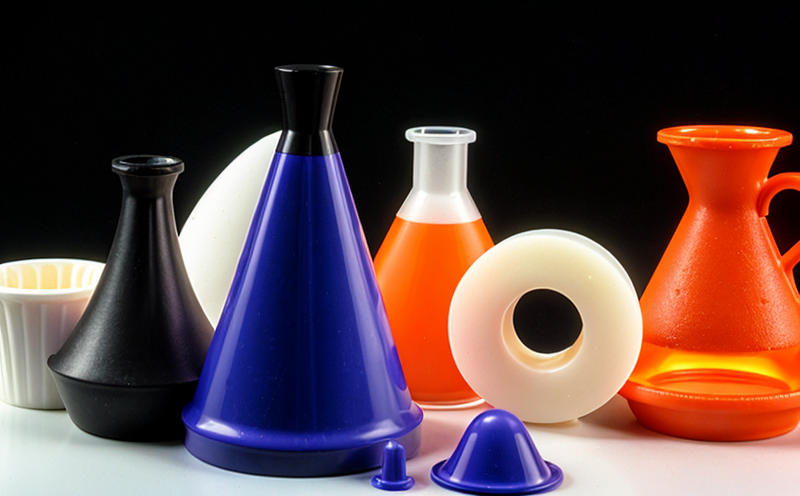GB T 1843 Impact Testing of Plastics
The GB T 1843 method is a widely recognized standard for determining the impact resistance of plastics. This testing procedure assesses the mechanical properties of plastic materials under dynamic loading conditions to evaluate their toughness and durability. Understanding the impact behavior of polymers is crucial in various industries such as automotive, construction, and electronics where components are exposed to significant external forces.
The test involves dropping a pendulum onto a specimen mounted on an inclined support. The energy absorbed by the sample during the impact determines its resistance. Specimens are typically prepared from standard dimensions (e.g., 150 mm in length) according to the specified protocol, ensuring consistency across tests and comparability with other results.
The data obtained from this test is invaluable for quality control purposes, helping manufacturers ensure that their products meet specific performance requirements. This testing method also facilitates research and development activities by providing insights into how changes in polymer composition or additives affect mechanical properties like impact strength.
For instance, adding fillers or compatibilizers can enhance the toughness of plastics at lower costs compared to switching to more robust base materials. However, these modifications may come with trade-offs such as reduced processability or increased cost. Thus, accurate testing methods like GB T 1843 become essential tools for optimizing formulations without compromising product performance.
Another application lies in regulatory compliance; many jurisdictions require manufacturers to demonstrate that their products meet certain safety standards based on impact resistance measurements. By conducting rigorous tests according to recognized protocols such as GB T 1843, companies can ensure they comply with local regulations while maintaining competitive edge through innovation.
This testing method is particularly important for materials used in automotive applications where parts must withstand harsh environmental conditions and sudden impacts without failure. The results of these tests allow engineers to make informed decisions about material selection and design modifications aimed at improving overall vehicle safety and reliability.
Applied Standards
| Standard Name | Code | Description |
|---|---|---|
| Pendulum Impact Testing Method for Plastics | GB T 1843-2008 | Determines the impact resistance of plastics using a pendulum test. |
| Test Specimen Preparation and Conditioning | ISO 178:2000 | Specifications for preparation, conditioning, and storage conditions applicable to tensile, flexural, and impact testing specimens. |
Scope and Methodology
| Test Parameters | Description | Value Range |
|---|---|---|
| Pendulum Energy | The energy imparted to the specimen by the falling pendulum. | 0.75 J, 1.25 J, and optionally 5.0 J depending on material properties. |
| Incline Angle of Support | The angle at which the support is tilted relative to the horizontal plane. | 30° ± 1° for most tests; may vary based on specimen type. |
The methodology begins with preparation and conditioning of the test specimens according to ISO 178:2000. This ensures that all samples are in a consistent state before undergoing impact testing. Once prepared, each sample is positioned vertically on an inclined support at the specified angle.
Next comes the actual application of the pendulum. The pendulum swings down and strikes the specimen from above. Upon contact, it transfers its kinetic energy into the plastic material through deformation and fracture processes. Depending on the amount of absorbed energy, different outcomes are observed ranging from small cracks to complete fragmentation of the sample.
An essential aspect of this test is quantifying the impact resistance by measuring how much energy was required to break or deform the specimen. This value reflects the toughness of the polymer under consideration and serves as a key indicator for quality assurance purposes.
International Acceptance and Recognition
- ISO 178:2000: This international standard provides general requirements for mechanical testing of plastics, including impact tests similar to those conducted under GB T 1843.
- ASTM D256: An alternative American standard that specifies procedures for measuring the impact resistance of plastics by means of a pendulum test, often used alongside or in lieu of GB T 1843.
- EN ISO 178: European counterpart to ISO 178:2000 which offers harmonized technical specifications for mechanical testing methods applicable across multiple countries within the EU.
The international acceptance of GB T 1843 impacts various sectors including automotive, electronics manufacturing, and construction where materials need to comply with global standards. Compliance ensures seamless trade between nations and reduces barriers related to differing national regulations.





